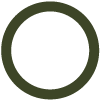Head to the vicinity of Lagoa do Canário , surrounded by a wood of Cryptomeria japonica, where you will find a clearing that is used as a car park by visitors and by those wishing to hike this trail.
Begin by walking up the shortcut, amid pastures that are common at these altitudes. Species such as Calluna vulgaris, Juncus sp., Ranunculus cortusifolius, and the endemic Festuca francoi e Holcus rigidus, as well as several concentrations of Sphagnum sp. of different tonalities can be found in these slopes, due to the high levels of humidity in this zone throughout the year.
After walking for 400 metres you will find a fork, take a left, cross the S-shaped gate ahead of you. Soon thereafter, in a flatter area, go around the hill ahead of you and, before continuing the climb, enjoy the view before you. We highlight the northern coastline and the volcanic massif of Água de Pau as well as Muro das Nove Janelas, an aqueduct built in stone, used for transporting water from this mountainous region to the city of Ponta Delgada.
Continue walking up, ignoring all detours for the next 300 metres, until you find a panel informing you of a detour to the right that will lead you to the lagoons. Go up the improvised staircase and, on your right, look at one of the walls of the Caldeira das Sete Cidades and, 150 metres ahead, take a small detour to the wooden belvedere from where you can view the first lagoon of this trail. Take the shortcut that goes around the lagoon and, on the new fork, choose the shortcut on the middle that will take you to the top of the slope, where you will find a wooden belvedere, next to a geodesic marker. From here onwards, in addition to being able to see the northeastern coast of the island to your right, you can also see Lagoas das Éguas standing next to each other from another perspective. At this point, one realises that the volcanic mountain range of Serra Devassa, which stretches in a northern-southeastern direction, is located in the southeastern limit of Caldeira das Sete Cidades and that the majority of the existing lagoons are located inside craters that were formed by basaltic slag that resulted from volcanic explosions.
Take the shortcut that goes down the slope until you find a small staircase that will guide you to a dirt road that is flanked by large embankments where it is possible to observe deposits of volcanic materials that resulted from explosive eruptions, such as pumice, the formation of which was caused by eruptions of Vulcão das Sete Cidades.
A bit further ahead you will see exemplars of Cryptomeria japonica, forming a barrier to the lagoon, which is located on the left side of the caldera - Lagoa Rasa. In the next fork take a left, among some exemplars of Calluna vulgaris. Do not be surprised if you see some Columba palumbus azorica flying in the vicinity. After passing by a kind of stone shelter, which in fact is the entrance to a cave that you should not enter, you can make a small detour of 20 metres to your left and get closer to Lagoa Rasa. Here you realise that you are on lower ground, in a depression situated in the midst of volcanic cones. Go back to the dirt road and continue going around the lagoon until you find a panel that informs you about the detour leading to Lagoas Empadadas (350 metres). Do take this worthwhile detour, through a “bagacina” (name given by the locals to red lapilli) pathway, on your right.
After taking the detour, take a narrow shortcut to your right, moving away from Lagoa Rasa. You will pass by some exemplars of Cryptomeria japonica and other spots with Sphagnum sp., which indicate high levels of humidity for most of the year. Further ahead, as a clearing appears in the vegetation, you realise that you are back to the place where you took a detour to Lagoa das Éguas. Go straight ahead and repeat the initial trail, this time in the opposite direction, until you return to the point where you started this trail.







